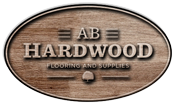Because of the relationship between temperature, moisture and RH, ventilation of a house in the winter tends to dry it out. When you bring cold outside winter air into a house and warm it up, the RH of that air drops significantly. For example, air at 30 degrees Fahrenheit and 50 percent RH when warmed to 70 degrees will be at 10 percent RH. To get the RH of this air back up to something respectable, we would need to add moisture. The more ventilation that is occurring, the more this dry air is drying out your customer’s house, and the more moisture she needs to add. The solution to this part of winter drying is to reduce ventilation. Ventilation of a house is measured in air changes per hour (ACH). As an example, a house that is 1,800 square feet with 8-foot ceilings has a volume of 14,400 cubic feet (1,800 x 8 = 14,400). Changing all the air in this house with fresh air once an hour would be one ACH. Current building codes and standards recommend home ventilation rates near 1/3 ACH. Not all states enforce these codes or standards. Average homes have ventilation rates near 1 to 2 ACH, while some old, leaky homes are near 7 to 10 ACH. Weatherization and home energy audits typically measure ventilation rates. These programs can also pinpoint leakage sites and direct sealing efforts to reduce excessive ventilation rates. Old windows are often major leakage sites, as are recessed lights and other holes in ceilings and floors.
Polishing Hardwood floors
Hardwood Flooring in the kitchen
Hardwood is often installed throughout the house for a seamless look. Though hardwood lasts for years, you can get fresh looks down the road by refinishing, staining kitchen floors.






